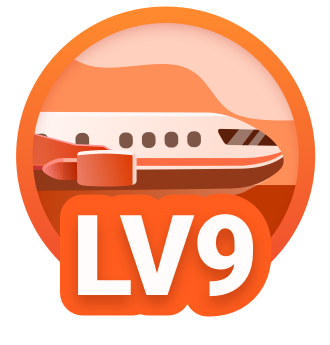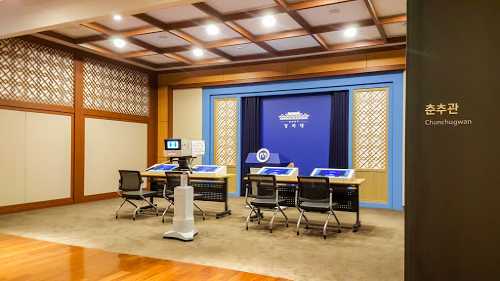Popular Trip Moments
History of South Korea's Presidency | A unique and cute pizza place, 🍕 Space Pizza where you can enjoy a variety of side and main dishes | Playground, a healing cafe full of good emotions, Jochiwon Water Treatment Plant📍☕️ | How to Travel to Sejong | Jochiwon Water Purification Plant Connect Tweet, perfect for a walk or tea time🍀🤍 | A place to stay after a walk, Jochiwon Water Purification Plant🤍🫶🏻 | 🍕 Recommended emotional pizza restaurant in Sejong Naseong-dong, Space Pizza🤍 | 🛼A place to visit with children: Sejong Bear Tree Park | 🎭A place to visit with family: Sejong Bear Tree Park🎪 | Sejong, a great place to enjoy nature and culture! | Sejong Cafe that feels like a European brunch cafe | A walk around the arboretum with a variety of colorful sights 👫 | Royal Traditional Garden Recreated in Sejong 🖼 | A large Sejong cafe filled with leisure in nature | I visited Central Park, where the picnic atmosphere is full of wide lawns! | A view of Sejong Lake Park from an open space🏞️ | If you are looking for a place to visit in Sejong on a rainy day, ⁉️this is it! | An artificial lake in the city center, Sejong Lake Park 🫧 | A cafe with a view from the 49th floor | Sejong, Soufflé Cheesecake Restaurant🍰 | 🏡Cafe Ylang Ylang Review (feat. Bungalow)🍰✨ | A natural indoor date course to enjoy in Sejong near Daejeon | Sejong City DMZ Pool Villa Complete Healing Review ✨🛀 | Sejong day trip hiking course recommendation | [Sejong] 🇰🇷 Sejong National Arboretum | Worthy of the title "Garden City"—Sejong, South Korea | When you want to eat healthy home-cooked meals, Sejong ‘Today’s Jji’ | A place where you can enjoy a 360-degree panoramic view, 'Pleasure' | Spring trips are best spent at arboretums! | A neat and clean homemade meal restaurant 'Oneuldoenji'
Recommended Attractions at Popular Destinations
Bangkok attraction near me | Manila attraction near me | Tokyo attraction near me | Taipei attraction near me | Hong Kong attraction near me | Seoul attraction near me | Kuala Lumpur attraction near me | Los Angeles attraction near me | Shanghai attraction near me | New York attraction near me | Shenzhen attraction near me | Osaka attraction near me | Singapore attraction near me | London attraction near me | Guangzhou attraction near me | San Francisco attraction near me | Beijing attraction near me | Macau attraction near me | Bali attraction near me | Jakarta attraction near me | Paris attraction near me | Ho Chi Minh City attraction near me | Istanbul attraction near me | Phuket attraction near me | Chicago attraction near me | Seattle attraction near me | Toronto attraction near me | Orlando attraction near me | Cebu attraction near me | Chiang Mai attraction near me
Popular Restaurants in Sejong
Hills of Freedom | Wonang | Starbucks Sejong Eojin | Andong Rice Soup | Songjeong | 역전할머니맥주 세종조치원점 | Dankong | Sugurae Gukbap | Miss Saigon, Sejong Branch | Gom Brothers Sejong Cheongsa | Yumsem Gimbap Sejong Government Office | Classic | Teacher Kim - Homeplus Sejong | Chaihyang | Arc Coffee | Wonang2013 | Sejong Korean Beef Town | Brown Kitchen | Yamsaem | Awesome Place | Anjou | Mom's Touch | Judog | Ediya Coffee Sejong Eojindong | Hollys Coffee | Sejong Sundae | Ate | Nisiki | Seven Street | 술이달다
Popular Ranked Lists
Popular Luxury Hotels Near Crepon | Top 3 Best Things to Do in Sanmenxia | Top 5 Best Things to Do in Huaihua | Popular Best Things to Do in Hami | Popular Premium Hotels in Karagandy | Top 6 Local Restaurants in Mohe | Top 8 Local Restaurants in Xuyi | Popular Best Things to Do in Wuhai | Top 8 Local Restaurants in Tiantai | Popular Premium Hotels in Gwadar | Top 4 Best Things to Do in Jinjiang | Popular Premium Hotels in Gorod Novosibirsk | Top 4 Best Things to Do in Xingyi | Top 6 Local Restaurants in Pingxiang | Popular Luxury Hotels in Puntarenas | Popular Best Things to Do in Ankang | Popular Premium Hotels Near Novosibirsk | Popular Premium Hotels in Osh | Top 12 Best Things to Do in Baise | Top 3 Local Restaurants in Tekes | Top 10 Local Restaurants in Bengbu | Top 10 Local Restaurants in Guanghan | Top 9 Best Things to Do in Sanming | Top 10 Local Restaurants in Taichung | Top 4 Local Restaurants in Chishui | Top 3 Local Restaurants in Xinyuan | Popular Premium Hotels in Archanes-Asterousia | Popular Best Things to Do in Luoping | Top 6 Local Restaurants in Huainan | Popular Best Things to Do in Ninghai
Payment Methods
Our Partners
Copyright © 2025 Trip.com Travel Singapore Pte. Ltd. All rights reserved
Site Operator: Trip.com Travel Singapore Pte. Ltd.
Site Operator: Trip.com Travel Singapore Pte. Ltd.






















